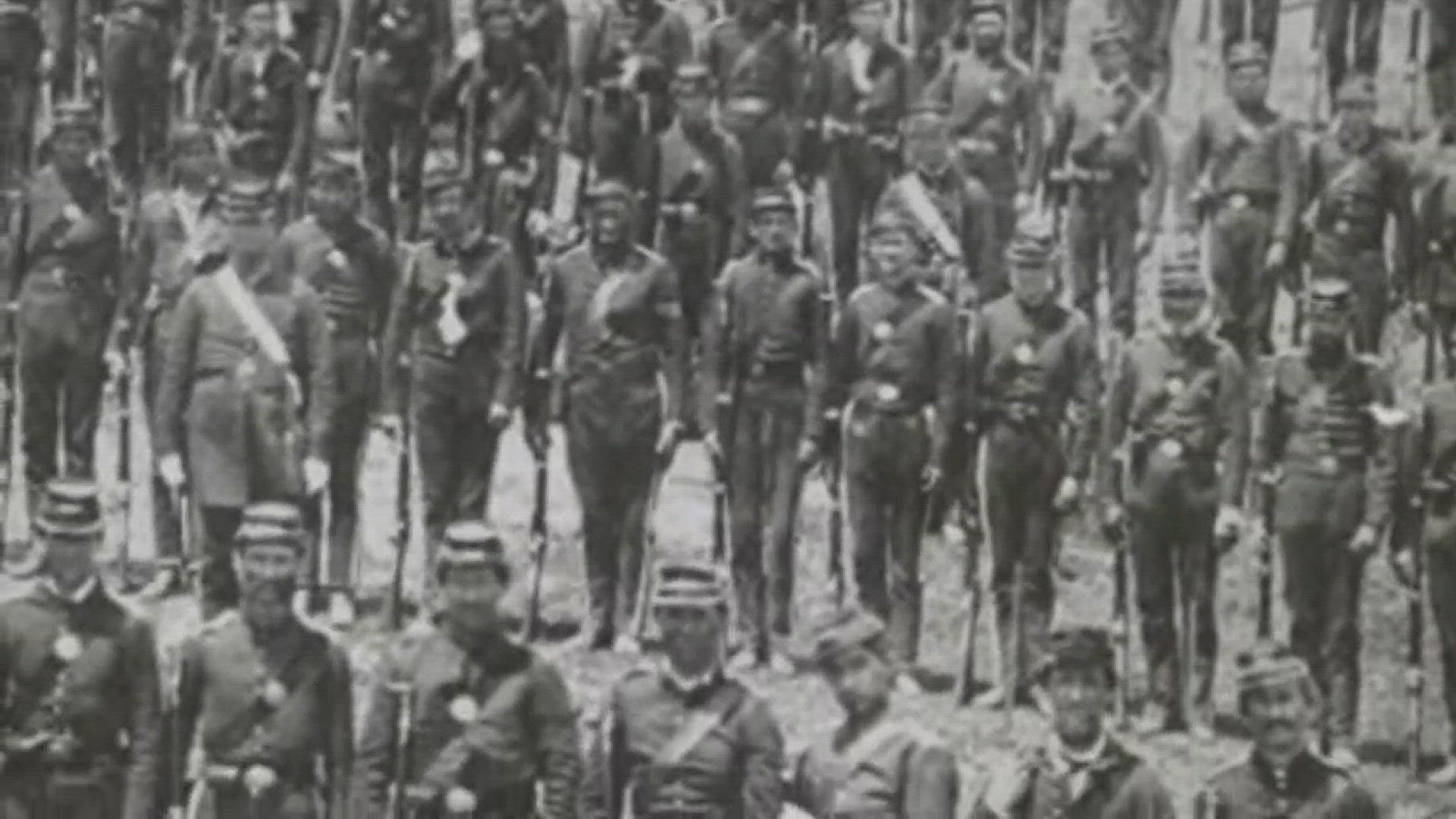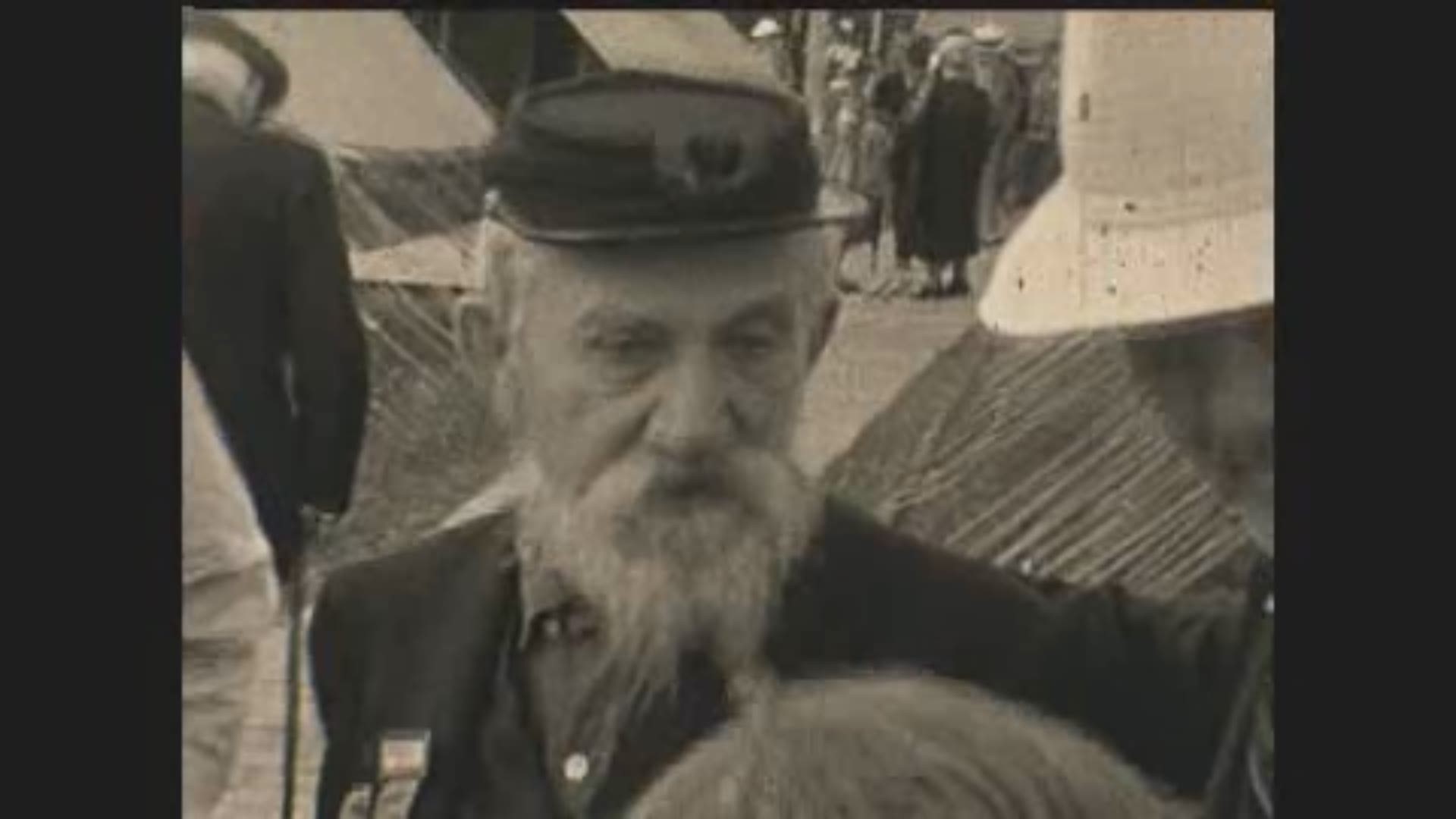LOUISVILLE, Ky. (WHAS11) -- One hundred and fifty-six years ago, America was ripped apart by the greatest conflict it had ever seen. Two years into the Civil War there was no end in sight, and rebel forces were making headway.
The Battle of Gettysburg was the high-water mark of the Confederacy, as General Robert E. Lee marched northward through the Shenandoah Valley with designs on penetrating deep into Pennsylvania.
Over the course of three days, Union and Confederate armies suffered between 46,000 and 51,000 casualties, making Gettysburg the most costly battle in U.S. history.
The relatively new technology of still photography allowed people to witness the horrors of war on a large scale for the first time, but the ability to capture these soldiers in motion did not exist, and would not exist for another generation.
Seventy-five years after the Battle of Gettysburg, the surviving members on both sides of the Civil War gathered on the battlefield one last time.
From July 1 to July 5 of 1938, nearly 2,000 Civil War veterans—including around 25 from the battle itself--descended on Gettysburg, Pennsylvania for the 75th anniversary of the battle, this time encamped together, sharing the battlefield not in conflict, but in remembrance.
Louisville resident Ron Crimm, now in his 80s and retired from the Kentucky state legislature, where he served for 20 years, was just three-years-old when his father took him to the 1938 reunion to get a first-hand account of an historic generation that was quickly fading away.
“My dad just thought it was important that I be exposed to this thing. And as it ends up it was important. It was very important. I'm thrilled to be able to say I shook hands with men who fought in the Civil War," Crimm said.
By this time, motion picture technology had progressed to the point where people could buy a hand-held movie camera, and Crimm's father had one--an 8mm Keystone. He took the camera along with him to capture the Civil War veterans in action as they returned to the battlefield. The resulting film had been forgotten in storage for years, until Ron and his wife Phyllis rediscovered it during a recent move.
The film shows a field of tents with an orderly boardwalk constructed between them to keep the veterans, most of them in their 90s, out of the mud.
The week's festivities included a military parade, memorial services and speeches from government officials, including President Franklin D. Roosevelt.
There would never be another full-scale reunion such as this one. The average age of Civil War veterans in 1938 was 94, and their population was rapidly crossing over into the pages of history. By 1956, no living Civil War veterans remained.
Looking back on his 1938 experience today, Crimm appreciates what his father enabled him to witness.
“I was three-years-old, and I think of my great-grandchildren today and I just wonder how many children at three-years-old would walk up and shake hands with strange people. And that's what I was doing—I was shaking hands with history.
“There's no place better to go than Gettysburg to feel that in the air. It's an amazing thing, the whole site of Gettysburg, and when you look at a specific thing that took place there, it even makes it more alive there.”
Upon return from the reunion, Crimm's father had to get the film developed. In those days, you had to send the undeveloped reel to the Eastman Kodak Company in Rochester, New York. The developed film was sent back in its original box by U.S. mail.
Few people still living today have had the experience of meeting Civil War veterans in person, and even fewer are likely to have the moment on video.
Although he was only three-years old when he had his first-hand encounter with one of our nation's most pivotal generations, Crimm can look to his father's 1938 home video to relive history. Suspended within those two minutes of silence are lives of a long-gone generation whose legacies we still live with today.
“It's a very interesting thing, and it's, it's kind of neat to be able to say that I shook hands with people who were soldiers in the Civil War.
“It makes history come alive, and it's an important part of the life in which we live. We can't change history. We can try to make things different, but we can't change the history itself.”
You can watch the entire 1938 home video here:


